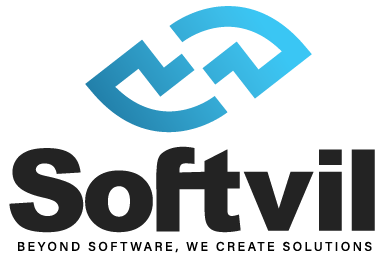- Introduction
- Android Studio: The Go-to IDE for Android App Development
- Xcode: Powering Native iOS and macOS App Development
- React Native: Unleashing Cross-Platform Mobile App Development
- Flutter: Empowering Cross-Platform App Development
- Xamarin: Unleashing Cross-Platform Native App Development
- Conclusion
Introduction
Mobile app development has become a thriving field with the ever-growing demand for innovative and user-friendly applications. To thrive as a mobile app developer, it is crucial to master various mobile app development platforms and tools. These platforms provide the foundation for building apps for different operating systems, such as Android and iOS, and enable developers to create powerful and feature-rich applications. In this article, we will explore the essential tools and platforms that every mobile app developer should master. By gaining proficiency in these platforms, developers can expand their skill set, enhance their productivity, and effectively cater to diverse project requirements.
Android Studio: The Go-to IDE for Android App Development
Android Studio is a key platform that every mobile app developer should master, serving as the official Integrated Development Environment (IDE) for Android app development. It offers a wide range of features, tools, and resources to streamline the app development process and create high-quality Android apps.
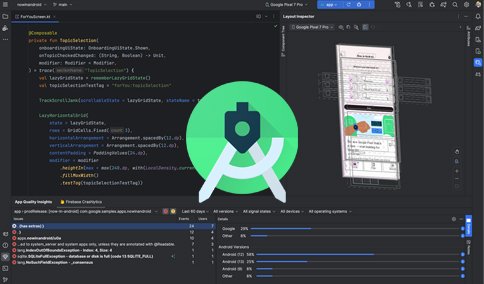
The Significance of Android Studio
Android Studio holds immense significance as the go-to IDE for Android app development due to the following reasons:
- Official Endorsement: Android Studio is officially supported by Google, making it the recommended choice for Android app development.
- Unified Development Environment: It provides a unified and intuitive environment that simplifies the app creation process and boosts developer productivity.
- Integration with Android SDK: Android Studio seamlessly integrates with the Android Software Development Kit (SDK), allowing developers to leverage the full potential of the Android platform.
Features, Tools, and Resources for High-Quality Android Apps
Android Studio offers a wide array of features and tools that contribute to the development of high-quality Android apps:
- Visual Layout Editor: The visual layout editor allows developers to design intuitive user interfaces with drag-and-drop functionality and real-time previews.
- Robust Code Editor: Android Studio’s code editor provides features like intelligent code completion, refactoring tools, and instant error checking, enhancing code quality and productivity.
- Testing and Debugging: Android Studio includes a built-in emulator and advanced testing and debugging tools, allowing developers to test their apps comprehensively and identify and fix issues efficiently.
- Android Asset Studio: The Android Asset Studio offers a range of tools for generating icons, themes, and other graphical resources, aiding in app customization.
Tips for Mastering Android Studio
To effectively master Android Studio and optimize the app development process, consider the following tips:
- Familiarize Yourself with the Interface: Spend time exploring Android Studio’s interface and understand the different panels, menus, and navigation options.
- Utilize Keyboard Shortcuts: Android Studio provides numerous keyboard shortcuts that can significantly speed up coding tasks and streamline workflow.
- Version Control Integration: Integrate version control systems like Git within Android Studio to manage code changes effectively and collaborate with team members.
- Continual Learning: Stay updated with official documentation, tutorials, and community forums to learn about new features, best practices, and efficient development techniques.
Xcode: Powering Native iOS and macOS App Development
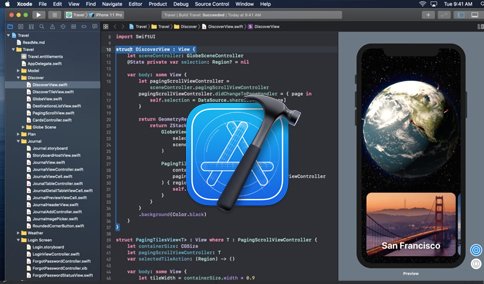
Xcode plays a pivotal role as the official Integrated Development Environment (IDE) for iOS and macOS app development. It offers a comprehensive set of features, tools, and resources that empower developers to create native applications for Apple’s platforms. Let’s delve into the significance of Xcode, its key features, and provide insights for mastering this robust IDE.
The Role of Xcode in iOS and macOS App Development
Xcode serves as the primary development environment for iOS and macOS app creation, with the following key aspects:
- Official IDE: Xcode is the recommended and officially endorsed IDE by Apple, providing developers with the necessary tools to build high-quality applications.
- Unified Platform: Xcode offers a unified platform for developing apps across iOS and macOS, allowing developers to leverage shared resources and code bases efficiently.
- Integration with Apple Technologies: Xcode seamlessly integrates with Apple’s frameworks, libraries, and APIs, enabling access to advanced functionalities and native capabilities.
Key Features and Functionalities of Xcode
- Interface Builder: Xcode’s Interface Builder provides a visual editor for designing user interfaces with drag-and-drop controls and real-time previews, simplifying UI design.
- Swift Programming Language: Xcode supports Swift, Apple’s modern programming language, offering a powerful and expressive coding experience for iOS and macOS development.
- Debugging and Testing Tools: Xcode provides robust debugging tools, including breakpoints, variable inspection, and performance analysis, alongside comprehensive testing capabilities for ensuring app quality.
- Simulator and Device Testing: The built-in simulator allows developers to test apps on virtual iOS devices, while device testing lets them run apps directly on physical devices for real-world validation.
Suggestions for Mastering Xcode
To maximize development productivity and proficiency in Xcode, consider the following suggestions:
- Explore Documentation and Resources: Familiarize yourself with the official Apple documentation, tutorials, and sample projects to understand Xcode’s capabilities and best practices.
- Embrace Keyboard Shortcuts: Learn and utilize Xcode’s extensive keyboard shortcuts to navigate the IDE swiftly and perform common tasks efficiently.
- Collaborative Development: Integrate source control systems like Git into Xcode to manage code changes effectively, collaborate with teammates, and ensure version control.
- Continual Learning and Community Engagement: Stay updated with the latest Xcode updates, new features, and industry trends by actively participating in developer communities, forums, and attending conferences.
React Native: Unleashing Cross-Platform Mobile App Development
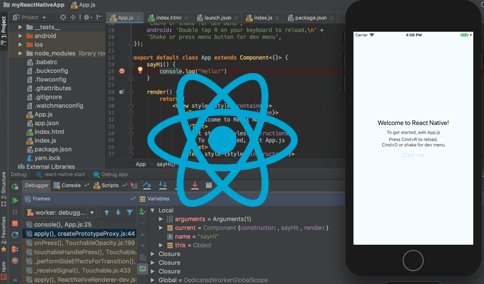
React Native has emerged as a highly popular cross-platform framework for mobile app development. It enables developers to build robust and performant applications using JavaScript, targeting both the iOS and Android platforms. Let’s delve into the concept of React Native, its advantages, and provide insights on how to master this versatile framework effectively.
The Concept of React Native
React Native revolutionizes mobile app development by allowing developers to build apps using a single codebase that can be deployed on multiple platforms:
- Cross-Platform Compatibility: React Native streamlines development by allowing code to be written once and deployed on both iOS and Android platforms.
- Native User Interfaces: The framework leverages native components, resulting in apps that offer a native-like user experience and performance.
- JavaScript Foundation: React Native harnesses the power of JavaScript, a widely adopted and flexible programming language, making it accessible to a broad developer community.
Building Apps with React Native
- Component-Based Architecture: React Native follows a component-based approach, allowing developers to build reusable UI components, resulting in efficient development and code maintenance.
- Access to Native APIs: React Native offers access to a wide range of native APIs and functionalities, enabling developers to leverage device capabilities seamlessly.
- Hot Reloading: React Native’s hot reloading feature allows developers to see real-time updates in the app while making code changes, reducing development cycles and enhancing productivity.
Mastering React Native
- Understand React Principles: Familiarize yourself with the core principles of React, such as component-based development and unidirectional data flow, as React Native builds upon these foundations.
- Explore the React Native Ecosystem: Dive into the rich ecosystem of React Native libraries, components, and community resources to discover pre-built solutions and best practices.
- Test and Debug Effectively: Utilize React Native’s built-in debugging tools and testing frameworks, such as Jest, to ensure app quality and identify and fix issues efficiently.
- Stay Updated: React Native evolves rapidly, so staying updated with the latest releases, documentation, and community discussions will help you stay ahead and take advantage of new features and improvements.
Flutter: Empowering Cross-Platform App Development
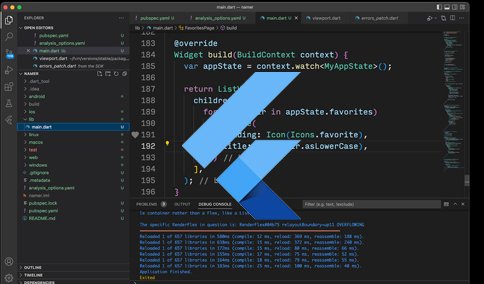
Flutter, developed by Google, has gained significant traction as a powerful cross-platform framework for mobile app development. Developers can create visually appealing and responsive applications for multiple platforms using a single codebase with ease. Let’s explore the essence of Flutter, its standout features, and strategies for mastering this versatile framework.
Introduction to Flutter
- Single Codebase: Flutter enables developers to write code once and deploy it on both iOS and Android platforms, reducing development time and effort.
- Dart Programming Language: Flutter employs Dart, a modern and reactive programming language, allowing developers to build efficient and performant apps.
- Native Performance: Flutter utilizes a unique rendering engine to deliver native-like performance, resulting in smooth animations and responsive UIs.
Key Features of Flutter
Flutter encompasses a range of features that simplify app development and enhance productivity:
- Hot Reload: Flutter’s hot reload feature enables developers to instantly see changes made to the code, facilitating rapid iteration and reducing development cycles.
- Widget-Based Approach: Flutter follows a widget-based approach, where the entire app interface is composed of small, reusable UI components, enabling rapid development and easy customization.
- Material Design and Cupertino Widgets: Flutter provides a rich set of pre-built Material Design and Cupertino widgets, ensuring consistent and visually appealing UIs across platforms.
Mastering Flutter
To effectively master Flutter and create visually appealing and responsive mobile apps, consider the following insights and strategies:
- Understand Widget Lifecycle: Familiarize yourself with the lifecycle of Flutter widgets, including initialization, updating, and disposal, to manage app state effectively and optimize performance.
- Leverage Flutter Ecosystem: Explore the vast ecosystem of Flutter packages, libraries, and plugins to access pre-built solutions, extend functionality, and speed up development.
- Responsive UI Design: Embrace Flutter’s flexible layout system and responsive design principles to create adaptive user interfaces that seamlessly adjust to various screen sizes and orientations.
- Continuous Learning and Community Engagement: Stay updated with the latest Flutter releases, official documentation, and actively participate in Flutter communities, forums, and events to learn from experts and share knowledge.
Xamarin: Unleashing Cross-Platform Native App Development
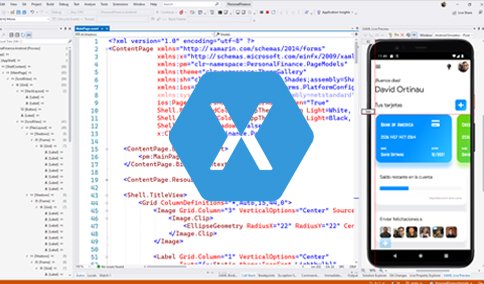
Xamarin stands as a robust cross-platform framework that facilitates the development of native applications using C# and the .NET framework. With Xamarin, developers can leverage code sharing and build apps for iOS, Android, and Windows platforms. Let’s delve into the essence of Xamarin, its code-sharing capabilities, and recommendations for mastering this powerful framework.
Introduction to Xamarin
Xamarin offers a comprehensive solution for cross-platform app development, emphasizing the following key aspects:
- Native Performance: Xamarin allows developers to create native applications that deliver high performance and a native user experience on each platform.
- C# and .NET: Developers can leverage their existing skills in C# and the .NET framework to build apps with Xamarin, simplifying the learning curve and maximizing code reuse.
- Platform-Specific APIs: Xamarin enables access to platform-specific APIs and capabilities, ensuring developers can utilize the full potential of each operating system.
Code Sharing and Development with Xamarin
Xamarin enables code sharing and development across multiple platforms, streamlining the app creation process:
- Shared Business Logic: With Xamarin, developers can share a significant portion of the app’s business logic across platforms, reducing development time and effort.
- Native User Interfaces: Xamarin allows developers to create platform-specific user interfaces using native controls and UI elements, ensuring a native look and feel on each platform.
- Xamarin.Forms: Xamarin.Forms is a UI toolkit that simplifies cross-platform development by providing a single codebase to create UIs for iOS, Android, and Windows platforms.
Mastering Xamarin
To harness the full potential of Xamarin and excel in cross-platform app development, consider the following recommendations:
- Learn Xamarin.Forms: Familiarize yourself with Xamarin.Forms to leverage its capabilities for creating shared UI code and building cross-platform user interfaces efficiently.
- Explore Platform-Specific Functionality: Dive into the platform-specific APIs and features available in Xamarin to tap into the unique capabilities of each platform and deliver a superior user experience.
- Utilize Xamarin Documentation and Resources: Make use of the official Xamarin documentation, tutorials, and sample projects to deepen your understanding and keep up with the latest updates and best practices.
- Engage in Xamarin Community: Join the Xamarin community through forums, user groups, and social media channels to connect with fellow developers, share knowledge, and gain insights from experienced practitioners.
Conclusion
Mastering mobile app development platforms is crucial for developers seeking to excel in the ever-evolving world of mobile applications. Having expertise in multiple platforms, such as Android Studio, Xcode, React Native, Flutter, and Xamarin, opens up a multitude of opportunities and allows developers to cater to a wider user base. The ability to create high-quality, cross-platform applications enhances productivity and competitiveness. Continuous learning and exploration of new platform developments are essential to stay updated with the latest tools, features, and best practices. By honing their skills in various mobile app development platforms, developers can unlock their full potential and deliver exceptional experiences to users across different operating systems.
